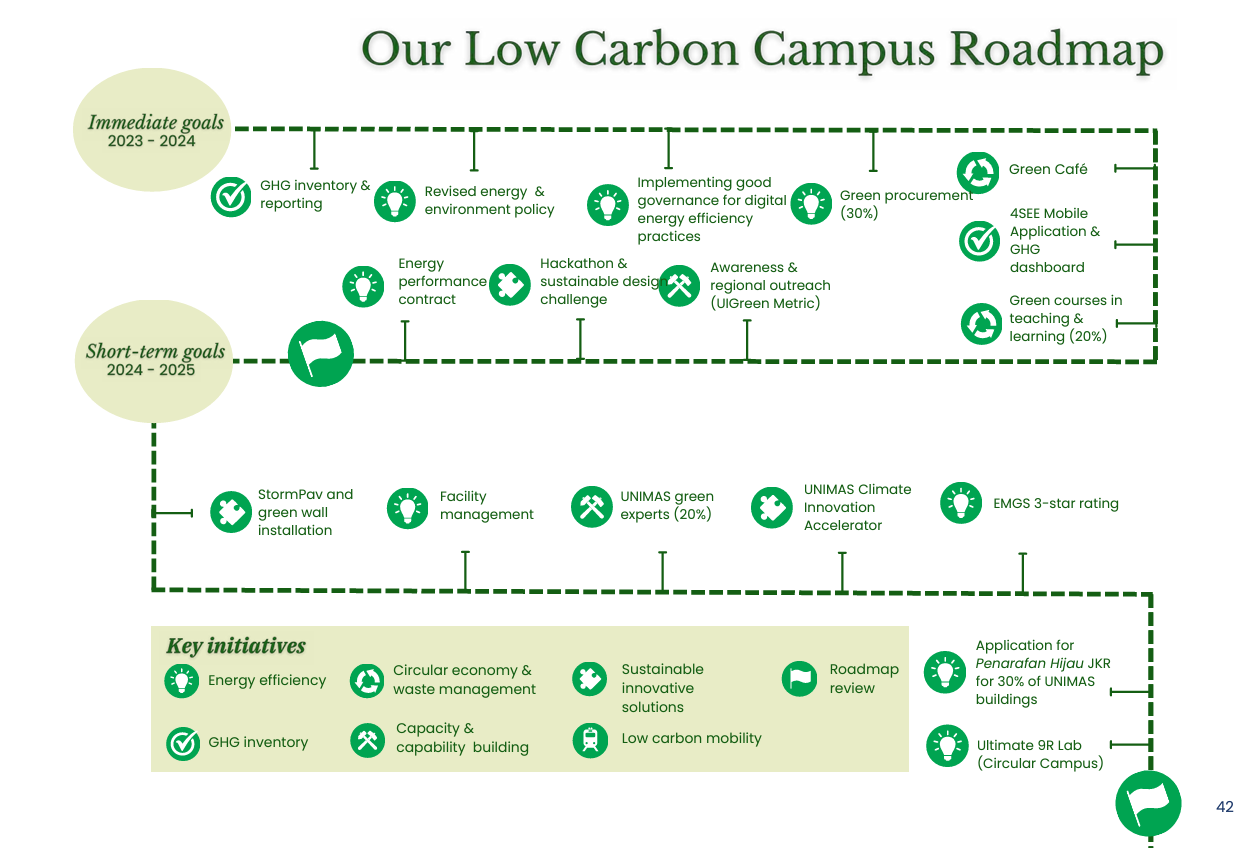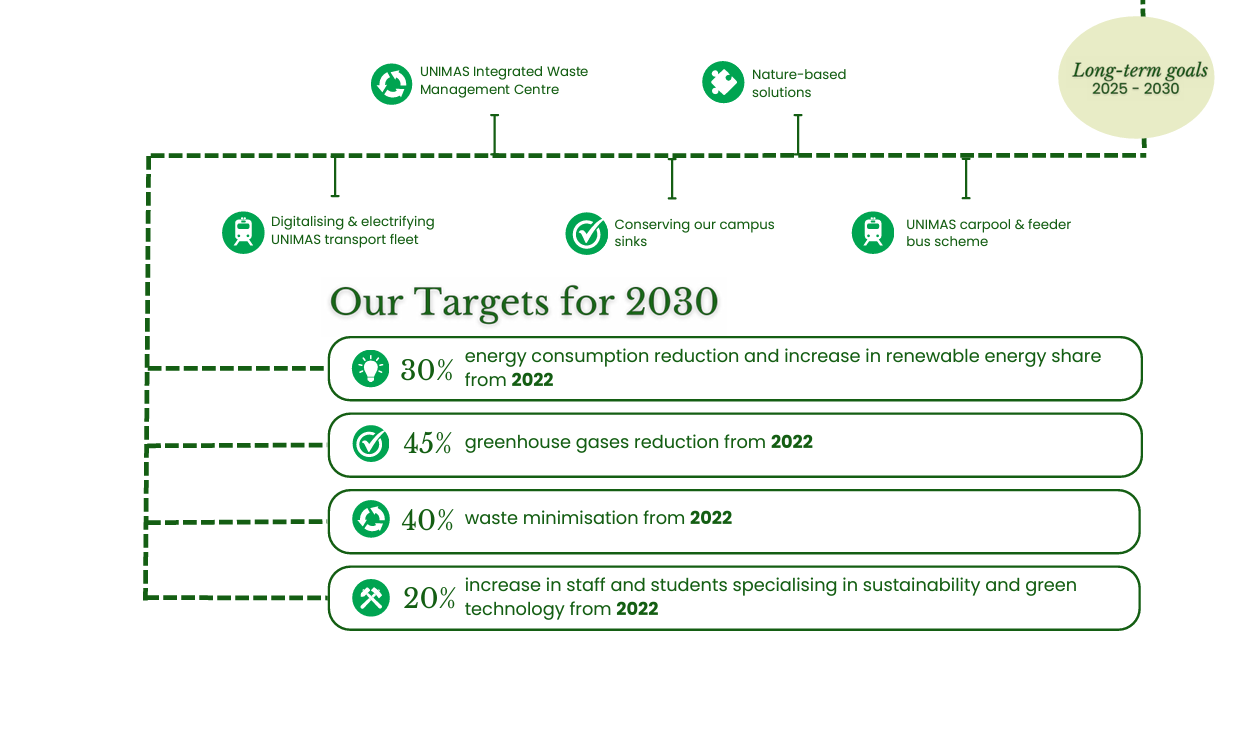
SUSTAINABLE CITIES AND COMMUNITIES
Build new buildings to sustainable standards
No. | Description | Evidence | ||||||||||||
|---|---|---|---|---|---|---|---|---|---|---|---|---|---|---|
1. | UNIMAS’s goal of achieving 30% renewable energy usage by 2026 directly supports its commitment to constructing new buildings to sustainable standards, as it requires every new development on campus to integrate energy-efficient design and renewable technologies such as solar panels. According to the Sarawak Tribune, UNIMAS is expanding solar installations on rooftops and public facilities, aligning with its Energy Policy and Low-Carbon Campus Roadmap to ensure future buildings reduce carbon emissions, cut operational costs, and contribute to a greener campus environment. | |||||||||||||
2. | The Sarawak Sustainability Insights Conference 2024, held on 29 October 2024, highlighted UNIMAS’ commitment to developing a low-carbon campus in line with the Sarawak Sustainability Blueprint. UNIMAS showcased ongoing initiatives such as expanding renewable energy use (including solar installations), improving energy efficiency, strengthening waste-management and recycling programmes, developing circular-economy projects, enhancing green landscaping and biodiversity conservation, and integrating environmental education for students and staff. The university also emphasised transparent ESG reporting through tools like its GHG Dashboard. Overall, UNIMAS aims to support the state’s long-term sustainability goals and position itself as a model for low-carbon campus transformation. | |||||||||||||




